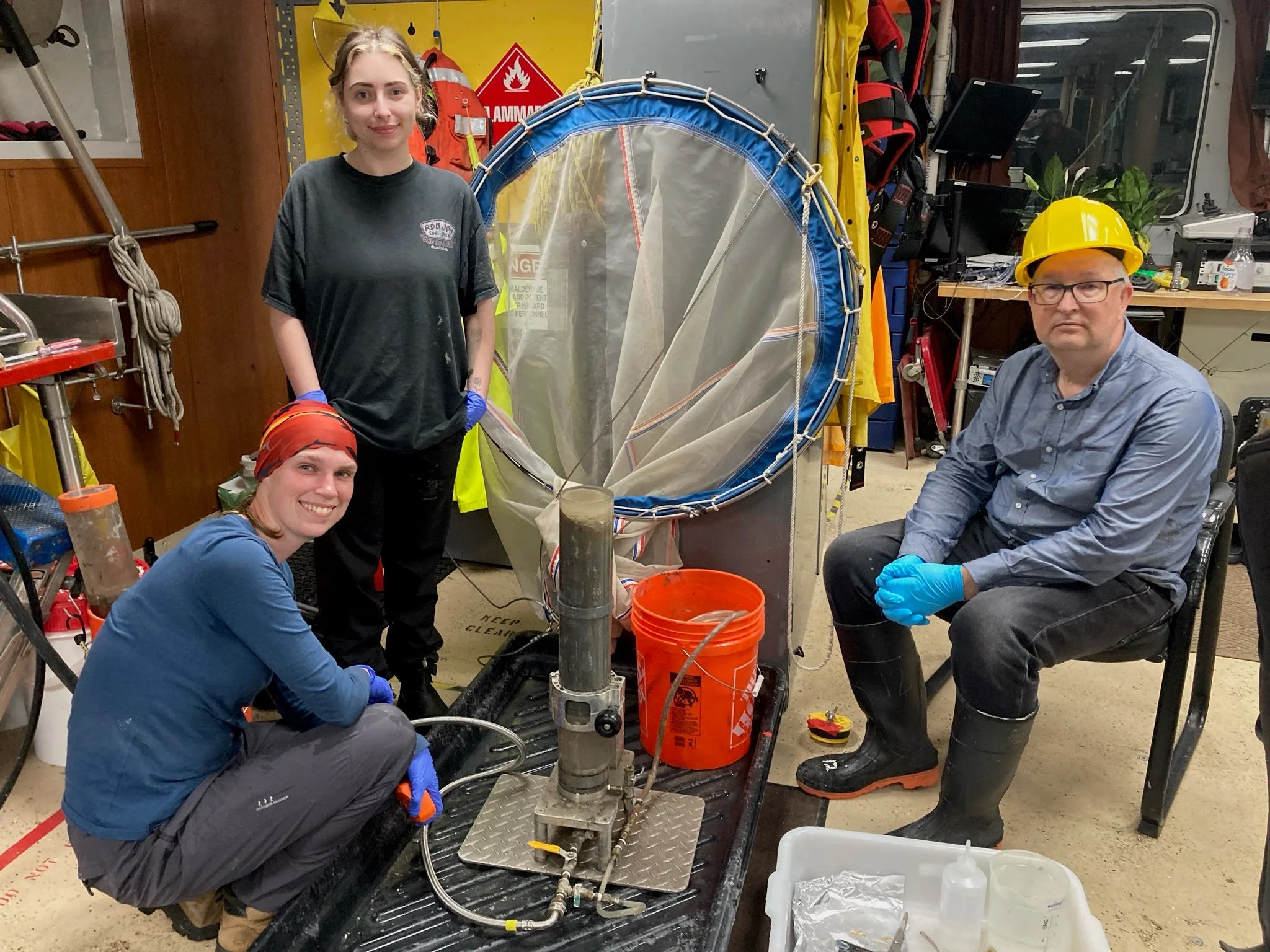Aboard the R/V Lake Guardian: Exploring microplastics in Lake Erie
By Serghei Bocaniov and Kayla Martin
The Cooperative Science and Monitoring Initiative (CSMI) is a collaborative program between environmental organizations from Canada and the United States that focuses on monitoring and assessing conditions in the five Laurentian Great Lakes. For 2024, the spotlight was on Lake Erie, where a team of scientists embarked on a research cruise in July. This cruise, hosted by the Great Lakes Center at SUNY Buffalo State, aimed to explore changes in the lake's sediment bio-geochemical conditions. The primary focus involved conducting a lake-wide benthos survey as part of the U.S. Great Lakes Biology Monitoring Program, led by the Environmental Protection Agency.
Aboard the research vessel (R/V) Lake Guardianoperated by the U.S. Great Lakes National Program Office (GLNPO), a team of 32 people, including 17 crew members and 15 research scientists, set out to gather critical data. Representing the University of Waterloo's Ecohydrology Group were Serghei Bocaniov, Kayla Martin, and Tia Jenkins. Their focus was to study the distribution and impact of microplastics (MPs) in Lake Erie, a pressing environmental concern given the lake’s role as a drinking water source for approximately 12 million people.

Photo: Kayla Martin, Tia Jenkins and Serghei Bocaniov.
Onboard Activities: Sampling Microplastics
Microplastics, defined as plastic particles smaller than 5 millimeters, pose significant risks to aquatic life and human health. These tiny pollutants can originate from a variety of sources, including the breakdown of larger plastic debris and the shedding of synthetic fibers from textiles. During the cruise, the team focused on collecting and analyzing sediment samples from various locations across Lake Erie to better understand the concentration and distribution of MPs.
The process began with the design of a strategic sampling plan. The team selected 11 sampling stations across both deep and shallow waters, covering the gradient of water movement from the lake’s western basin to its eastern basin. This approach ensured a comprehensive assessment of MPs distribution across the lake.
At each study site, the team evaluated the suitability of the lakebed substrate for sediment coring. This was done using data from benthos survey methods, including the Ponar grab sampler and underwater camera imaging. Once a suitable location was identified, the team deployed the MC-400 Hedrick/Marrs Multi-Corer, an instrument designed to retrieve undisturbed sediment cores from the lakebed.
The multi-corer was carefully lowered to the lake bottom, where it collected sediment samples in tubes. Once retrieved, the sediment cores were transported to the onboard laboratory for immediate processing. In the lab, the team used a motorized hydraulic sediment core extruder to carefully slice the sediment into sections, which were then prepared for microplastics analysis.
What’s Next: Analyzing the Data
The sediment samples collected during the cruise will undergo detailed analysis to determine the concentration of microplastics at various depths. Additionally, the team will measure isotopes of lead (Pb-210) and cesium (Cs-137) in the samples to estimate sediment accumulation rates over the past 100-150 years. This data will help researchers construct a timeline of microplastics deposition in Lake Erie, providing insights into the sources and historical trends of plastic pollution in the region.
Ultimately, this research will contribute to a better understanding of how microplastics are distributed within Lake Erie’s ecosystem and how they may impact water quality and aquatic life. The findings will be crucial for developing strategies to mitigate plastic pollution in the Great Lakes and protect the health of these vital freshwater resources.